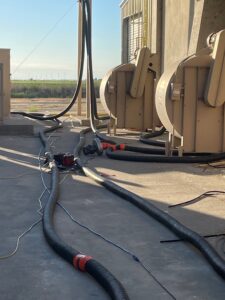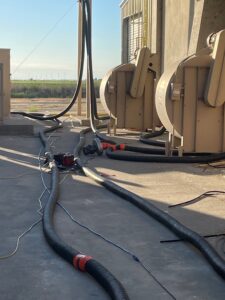Stored Grain Products Are Under Constant Threat From Pests
Pest Management Solutions for Your Business
California is known worldwide for its vast agricultural growing and production capacity. From the world’s choicest grapes to
A California crop that often is overlooked is rice. California rice growers produced 41.21 million centum weight of rice in 2020 and the state is the second largest rice producer in the country (behind Arkansas). In total, the state’s rice growers produced 20 percent of the U.S. rice harvest last year.
History tells us stored grain products are constantly under the threat of pest infestation. And rice is no different.
The Pest Threat
California rice is stored as rough rice until it is shipped for milling and needs to be protected from damage by insects and other pests, such as rodents and birds. It also must be maintained at an appropriate temperature and moisture content to preserve its quality.
What impact does an insect infestation have on stored rice? It can reduce the selling price by negatively affecting the rice grade, determined by the percentage of insect-damaged kernels, or by causing the rice to be classified as “infested” if live insects are found.
Insect activity in rice can also increase grain temperature and promote the growth of microorganisms that cause spoilage and reduce the quality of the rice. High grain temperatures and moisture may also cause odors that further reduce the value.
The pests that pose the greatest threat to rice storage facilities include the:
- Rice weevil
- Less grain borer
- Red flour beetle
- Angoumois grain moth
- Indian meal moth
Finding A Solution

The preferred method for eliminating insect pests in rice is fumigation. Unlike other food commodities that can be treated as part of a whole structure fumigation, fumigating rice storage flat houses is a far more complex task.
Francis Clark, branch manager for Sprague Pest Solutions in Sacramento, said the challenge in fumigating rice storage facilities is two-fold:
- The flat house warehouses are large; upward of 500,000 cubic ft and measuring 300 ft. long and 80 ft. wide.
- The labor requirement is intensive as the piles of rice – stacked 25 ft. high – must be covered with large plastic tarps that are sown together. Corrugated plastic tubing with multiple t-ports is then laid under the tarps to deliver an effective dosage of the fumigant.
“We have to get on top of the rice piles, which is like climbing on a sand dune, and lay the tubing to ensure the fumigant is properly distributed and recirculated throughout the product,” said Clark. “It’s like laying a large plastic blanket over the rice piles.”
Adding to the challenge is that since moisture levels inside the storage facilities need to be kept low, their construction is not always conducive to prevent pests from gaining access.
“Most of the storage facilities have corrugated roofs that are intentionally not sealed so air can flow easier,” said Clark. “The design is an invitation for pests to come inside.”
Recommendations for Pest-Free Rice Storage
The adage that an ounce of prevention – even when you are working with tons of rice – is worth a ton of cure applies.
Sprague recommends rice storage facilities adopt the following measures to reduce the risk and keep their inventory pest-free:
- Focus on prevention and deploy an integrated pest management (IPM) approach to deter pests, including rodents and birds, from establishing a foothold. Remember, pests attract other pests.
- As part of you IPM program, establish a pest monitoring program to chart pest activity levels.
- Take the necessary corrective actions – installing door sweeps, sealing cracks and crevices and installing screening that allow for air flow but that deter pests.
- Pay attention to sanitation, building design and maintenance that can promote conditions that attract pests. Eliminating grain, dust and other residue that attract pests, and doing a thorough cleaning while storage structures are empty will help prevent future infestations.

September and October are prime harvest season for rice in the Sacramento Valley. Storage facilities push hard for fumigations to be performed before the stored rice is sent off to mills and processing plants.
“The chief concern is for growers to be able to ship pest-free product that won’t end up being rejected at the loading dock
of the mill or processing plant, especially if that plant is audited,” said Clark. “It can cost growers a significant amount of money if they have no one to sell their inventory to.”
When partnering with Sprague on a fumigation and regularly scheduled pest control services, rice storage facilities can be assured that all federal, state and local regulations are followed, and all paperwork is properly completed and accessible. They can also count on all safety protocols to be strictly followed.
For more information on Sprague Pest Solutions’ fumigation and pest management services can keep your facility pest-free and protect your products, employees and customers, visit our website or call 800.272.4988.
